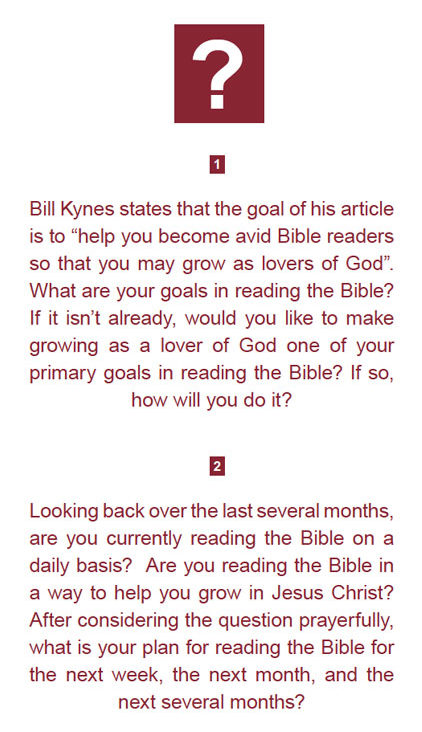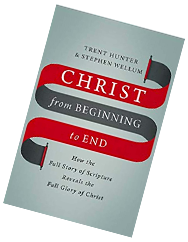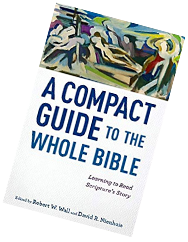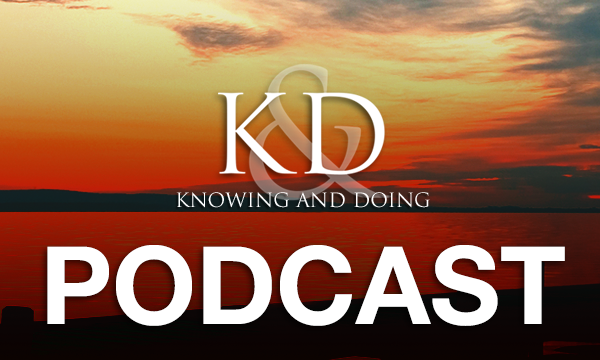Back to series


Recommended Reading:
NIV Biblical Theology Study Bible, D.A. Carson, general editor (Zondervan 2018)
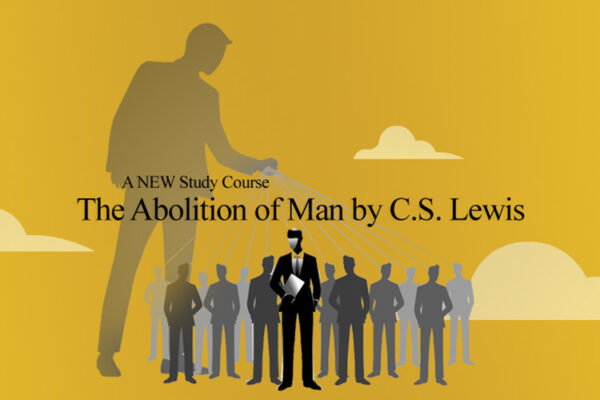
Download or Listen to Audio
Introduction and Overview of the Bible
Click here to open a Print-Friendly PDF
(This is a four-part series on How to Read the Bible. Part 1, Part 2, Part 3, Part 4.)
I will assume that you are already convinced: the Bible is the very word of God. You’ve come to put your faith in Jesus as the divine Son of God, and you’ve seen that to honor Him as Lord, you must share His own view of the Scriptures — namely, what the Bible says, God says. Therefore, you believe that the Bible comes to us with the supreme authority of God Himself. It is true in all that it teaches.
Not only is the Bible true, you also believe it is sufficient. It tells us all we need to know about God and His saving work in Christ to be reconciled to Him and to live a godly life in this world. The Bible is the source of life, for the Spirit takes its words and applies them to our hearts so that through it, God reveals Himself to us personally. It is the Word of God empowered by the Spirit of God that brings the life of God into our lives.
For this reason, you believe that reading and understanding the Bible is essential to the Christian life. As the apostle Paul writes, “All Scripture is God-breathed and is useful for teaching, rebuking, correcting and training in righteousness, so that the servant of God may be thoroughly equipped for every good work” (2 Tim. 3:16–17).1
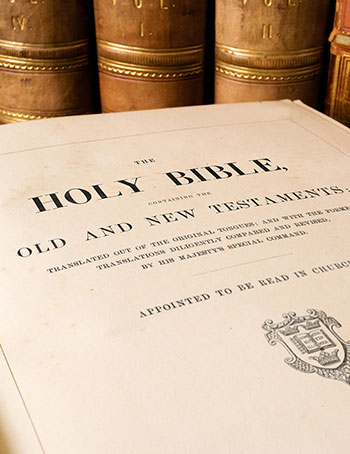 So you believe that reading the Bible is critical, and I assume that you have tried to read it yourself. Maybe you have tried a random method — just letting the book fall open and reading whatever happens to appear.
So you believe that reading the Bible is critical, and I assume that you have tried to read it yourself. Maybe you have tried a random method — just letting the book fall open and reading whatever happens to appear.
I don’t doubt that God can use that in our lives, but I don’t recommend it. Perhaps you’ve heard of the person who tried this and first opened to Matt. 27:5, which reads, “Then [Judas] went away and hanged himself.” Then his Bible opened to Luke 10:37, ”Go and do likewise.” There must be a better way!
Maybe you started at the very beginning, resolved to read it straight through. That makes a lot of sense, but the Bible is a big book, and some of it may not seem to make much sense.
Many people get bogged down early on, when they encounter long sections of the book of Leviticus describing in meticulous detail the way in which bulls and goat were to be slaughtered and then presented on the altar in Israel’s worship.
What is one supposed to make of all of that? It seems so disconnected from life in our world that they give up their reading altogether.
In this series of four articles, I want to help people who want to read the Bible but aren’t sure how to do it. I begin with a general introduction, considering what the Bible is, providing an overview of its central story line and its central message. In the next two articles, we’ll delve into the subject of interpretation: how can we rightly interpret the Bible in its various literary forms? Finally, we’ll address the way in which God can work through the Bible to change our lives. My goal is to help you become avid Bible readers so that you can grow as lovers of God.
What Is the Bible?
First, note that the book we call the Bible is really a compilation of many books — sixty-six to be precise. These books were written by a least thirty different authors, each with his own particular interests and viewpoint and literary style. And these books are of many different literary forms. Some are historical books that tell a story.
The opening seventeen books of the thirty-nine books of what we call the Old Testament are of this genre. We’ll talk more about the story they tell in a moment.
The four Gospels of the New Testament and the book of Acts are also historical in form. But the Old Testament also includes books that are largely poetic and that deal with human experience in relation to God in various ways. There are also books that record the messages of prophets who deliver divine messages.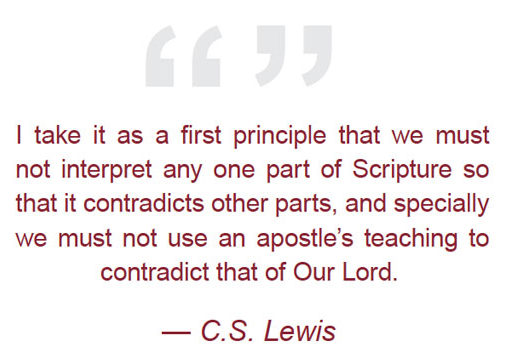
In addition to the Gospels and Acts, the New Testament is largely composed of letters written by Paul and other authorized messengers with instructions to individuals and to churches.
Finally, the Bible ends with a book that has its own form, called apocalyptic, which communicates its message through wild visions filled with strange creatures. Each of these literary forms requires its own interpretive strategy to understand its message rightly.
Not only is the Bible a library of books written by many authors in many different forms, but it was also written over multiple centuries.
Unlike what is claimed for the Book or Mormon or the Qur’an, the Bible didn’t come down out of heaven full blown all at once. Instead, God used human authors (called prophets and apostles) to write what He wanted written during the course of His revealing work among His people in history.
 The first five books of the Bible, known as the Pentateuch, are often referred to as the Law of Moses, being attributed to the man who led the Israelites out of their bondage in Egypt and received the law of God on Mount Sinai.
The first five books of the Bible, known as the Pentateuch, are often referred to as the Law of Moses, being attributed to the man who led the Israelites out of their bondage in Egypt and received the law of God on Mount Sinai.
This took place more than three thousand years ago. The last book of the New Testament, the Revelation of John, is thought to have been written near the end of the first century AD.
So the writing of the books of the Bible spans more than a thousand years. This is important because it means that there is a progression in the story the Bible has to tell.
We must know where any book fits in this long history, appreciating what has come before and what will come after. The great dividing line is, of course, between the Old Testament and the New; even within these two divisions, the location in time of each book is important in rightly understanding its message.
With so many different books written by so many authors over such a long time, how can we conceive of the Bible as a single book? Here we come to the Bible’s distinctive claim: God uses the words of human authors to speak His message. The Bible comes to us with a dual authorship—both human and divine.
The Spirit of God superintended the writing and the compilation of these many books to form the one book we need to know Him. This divine work of the one divine mind ensures that, in all its diversity, the Bible has a unified message. One of the most important principles for reading the Bible well is that we must read each individual part in light of the whole message. It is a message that is revealed in history, and it is to that story that we now turn.
The Bible’s Grand Story
Neil Postman, a communications professor at New York University, put it well: “Children everywhere ask, as soon as they have the command of language to do so, ‘Where did I come from?’ and, shortly after, ‘What will happen when I die?’ They require a story to give meaning to their existence.
Without air, our cells die.” And, “Without a story, our selves die.”2
Everyone has to have some kind of story. It’s a story that answers the deepest questions of our lives: Who am I? What is wrong with the world? What can be done about it? And is there any hope for the future? Our lives can only have meaning if they are part of a larger story.
The Bible is unique among religious texts in that it takes the form of a narrative that tells the story of humanity in this world from beginning to end. Its opening chapter begins with God creating the heavens and the earth in which God fashions human beings to live in relationship with Him. Its final chapters describe the coming of a new heaven and a new earth in which He will dwell with His people. In between, we have a drama of a relationship disrupted by human rebellion and then restored by the gracious work of God.
This big, overarching story provides a framework within which the various smaller stories of the Bible fit. Knowing the basic plot of the Bible provides a kind of map to help you find your way around as you explore its many parts. The four acts of this drama can be captured in the expressions Creation, Fall, Redemption, and New Creation.
Act 1: Creation
First, the story of the Bible begins with the glorious God who acts in creation: “In the beginning God created the heavens and the earth” (Gen. 1:1). The Bible begins with God, and rightly so, for God is the first cause of all other causes; He is the source of all that exists. In the opening chapter of Genesis, God’s creative work is set forth in the form of a work week in which the culmination of His work is the creation of human beings in His own image.
Several things stand out in this story of creation. First, the Bible affirms that God and this material world are distinct from each other. This world is not a part of God or an extension of the being of God. God stands without rival over His world, as its transcendent King.
He is the Author with a capital “A” of this story—all of history is, indeed, His-story.
Second, the Bible affirms that God created an orderly world. The biblical story sets this forth in the description of the six days of creation.
However they are understood, they reflect a controlled and ordered process, reflecting God’s own wisdom. That’s what makes this a cosmos, rather than mere chaos. It is a rational process, not a random one, and it is this biblical understanding of the natural world that actually led to the rise of modern science.
Third, we see that this ordered world has a purpose. The narrative of Genesis 1 builds in its six days to the crowning act of creation — the creation of human beings as male and female, created in the image of God. Human beings have a distinctive God-given character, unique among the creatures as personal beings, reflecting the personal nature of God. This is the source of our unique dignity as human beings — and of our responsibility toward one another. God has created us that way supremely so that we might know Him and love Him as the glorious source of love itself.
Act 2: Fall
 We read at the end of Genesis, chapter 1, that “God saw all that he had made, and it was very good.” It was a beautiful creation, unspoiled by evil of any form. That first human couple enjoyed life in a garden called Eden.
We read at the end of Genesis, chapter 1, that “God saw all that he had made, and it was very good.” It was a beautiful creation, unspoiled by evil of any form. That first human couple enjoyed life in a garden called Eden.
But quite suddenly, in Genesis 3, a new character emerges into this idyllic world—a tempter. He is depicted as a serpent, a snake—a mere creature, certainly no rival to the sovereign rule of the Creator.
The tempter appears (and his mysterious appearance reflects the mystery of evil itself), and his role in the story emphasizes that there was nothing in human begins themselves, no natural cause, to prompt them to rebel against God’s rule. There was simply moral freedom, freedom reflecting God’s own freedom.
God had said to that first man, Adam, “You are free to eat from any tree in the garden; but you must not eat from the tree of the knowledge of good and evil, for when you eat of it, you will surely die” (Gen. 2:16–17). But the tempter made this liberal permission with a single prohibition seem totally restrictive and restraining.
Through the temptation of the serpent, Eve and then Adam after her decided that God’s goodness toward them could not be trusted. In their own pride, wanting to become like God themselves, they rebelled against His rule and disobeyed.
This first act of disobedience toward God is called the fall, because of its awful consequences. For the first time, shame, fear, and guilt entered the experience of humanity. But the final result of this disobedience was judgment.
God, the glorious Creator, reveals Himself also as God the righteous Judge. God curses Adam and Eve for what they have done, and they are banished from the garden. Cut off from their relationship with God, death entered the world, and they died — spiritually and ultimately physically as well.
They died, and their children also eventually died. In fact, the sin that began so innocently with the bite of a single piece of fruit quickly escalated in the next generation into murder — fratricide — as Adam’s son Cain killed his brother Abel (Gen. 4). And the corruption of sin is depicted in the stories of Noah and the tower of Babel that continue through Genesis 11.
Act 3: Redemption
We turn now to the third act of the biblical story, which runs through to the end, including both Old and New Testaments. Here we come to the central tension of the biblical drama. Is there any way to redeem this fallen world and to overcome the polluting effects of sin unleashed by the rebellion of Adam and Eve? Will that goodness, that blessing of creation ever be regained? Can the broken relationship of humanity with its Creator ever be restored?
Scene 1: Old Testament Promise
Though hinted at earlier (cf. Gen. 3:16), it is at just this point that the plot line of the biblical story takes a decisive turn. The Lord in His grace calls a man named Abram, later called Abraham. We read in Gen. 12:1–3:
Now the Lord had said to Abraham, “Go from your country, your people, and your father’s household to the land I will show you. I will make you into a great nation, and I will bless you;… and all the peoples on earth will be blessed through you.”
This introduces God’s gracious plan of redemption in the form of a covenant. God promised to bless Abraham, to make him into a great nation, to create a new people to whom God would reveal Himself, and, through this new people, to bring blessing to the world.
The Lord’s grace in redemption comes in two parts. The Old Testament story is one of promise. In the book of Genesis, God’s covenant promise to Abraham is passed to his son Isaac, and to Isaac’s son Jacob — and this Jacob, who had twelve sons, was renamed Israel.
The book of Exodus continues the story as these twelve sons, in the providence of God, ended up in Egypt, where their descendants increased in number, becoming twelve tribes, who in time became enslaved to the pharaoh.
But the promise continued. By the mighty acts of God, Moses led the Israelites out of Egypt through the great Exodus through the Red Sea to Mount Sinai, where the Lord revealed Himself in glory and gave them His law by which this new nation was to be governed. The law revealed God’s own holiness and righteousness, and it bound the people to obedience.
It included an elaborate system of sacrifices that were to teach the people the seriousness of sin which deserved death. But at the same time, God, in His mercy and grace, provided through these atoning sacrifices a means by which sinful human beings might come to Him in worship.
Though Israel was rescued from slavery by God’s grace and given a new homeland, the people failed to respond to God’s love in faithful obedience. When they entered the Promised Land, they turned to the gods of the people all around them and turned their backs on the God who had rescued them. Can God’s justice ever be reconciled with His gracious purpose of redemption?
 Eventually the Lord gave His people a king, David, to whom He again gave His word of blessing, renewing His covenant promise.
Eventually the Lord gave His people a king, David, to whom He again gave His word of blessing, renewing His covenant promise.
David united the nation, established Jerusalem as its capital city, and made plans to build a glorious temple; after he died, his son Solomon built that magnificent temple for the worship of the Lord.
The temple was to display the holiness of God and was to be a visual sign of the presence of God among His people, but it was continually defiled by false worship.
The kings became corrupt; the people engaged in idolatry and sexual perversion. They exploited the poor and even sacrificed their own children on the altars of pagan gods.
God sent His messengers, the prophets, to speak His truth to them, warning them of His judgment, but they did not listen. Their hearts were hardened, and, it seemed, their possession of the law of God only increased their own sinfulness.
Then, just as the prophets predicted as God’s punishment, first the northern tribes were conquered by the Assyrians, and then the tribes in the south were taken into exile to Babylon.
What was to become of the covenant of grace? What was to happen to this divine promise of redemption and the reestablishment of God’s good rule in the world? God’s people, who were to be His instruments for the salvation of the world, were themselves in need of a Savior. The law could not save them--only an act of God’s grace could rescue them from the grip of sin.
Nothing less than a new covenant would do. It was then, in the despair of exile, that the prophets spoke most clearly of a continuing promise when God Himself would come as their King to defeat their enemies and to establish His eternal kingdom.
The Israelites eventually returned to their homeland, but at the close of the Old Testament, they were still awaiting the fulfillment of God’s promise.
Scene 2: New Testament Fulfillment
When we turn the page and move from the Old Testament to the New, we open to the four Gospels, which tell the story of Jesus. The very first thing you notice is the way that the Gospel writers, the “evangelists” as they are called, seek to connect their story with what has gone before.
Matthew, in fact, begins with, of all things, a genealogy — tracing the lineage of Jesus back to Abraham, through the line of King David. The whole history of Israel was coming to its climax in the arrival of Jesus — the One who has come to save His people from their sins, and to bring God rule, God’s kingdom, into the world.
Through His authoritative teaching and miraculous acts of healing, Jesus showed Himself to be the Messiah, the Christ, God’s anointed King. He came as a new Adam, living the life of faithful love and obedience which had been God’s design for humanity from the beginning.
Mysteriously, the kingdom He came to bring would not be gained through military might, but through humble self-sacrifice. Jesus would die on a Roman cross as an atoning sacrifice, offering Himself in our place, and so displaying both God’s righteous judgment on human sin and His grace toward sinners.
As the prophet Isaiah had put it hundreds of years before, “He was pierced for our transgressions, was crushed for our iniquities; the punishment that brought us peace was upon him, and by his wounds we are healed (Isa. 53:5).
A New Beginning
 But the grave could not hold Him! On the third day, Jesus was raised from the tomb in a glorious resurrection body, the beginning, the first installment, of the full and complete restoration of God’s fallen creation.
But the grave could not hold Him! On the third day, Jesus was raised from the tomb in a glorious resurrection body, the beginning, the first installment, of the full and complete restoration of God’s fallen creation.
After a period of forty days during which He was seen by his followers and as many as five hundred at one time, He ascended into heaven.
But He promised to return to earth—this time in glory to gather His people to Himself and to bring about the final destruction of evil and the complete restoration of God’s creation.
In the meantime, beginning on the Day of Pentecost, Jesus sent the Holy Spirit to indwell and empower His followers.
They were to be witnesses of what God had accomplished in Jesus Christ and to call all people everyone to repent and believe this good news, this “gospel.”
The book of Acts tells the story of the early days of the church after Jesus’s departure, as the followers of Jesus went out from Jerusalem as far as Rome. We see this Jewish sect grow to become a worldwide people of Jews and Gentiles.
Most of the rest of the New Testament is a collection of letters written by these commissioned messengers of Christ instructing and encouraging the early Christians in their new way of life. They bear witness to the gospel of Jesus Christ and all that that means, calling the followers of Jesus to live faithfully before God as their Father until Jesus returns in glory.
Act 4: The New Creation
The Bible ends with a vision given to the apostle John of the final struggle with evil and the vindication of Jesus and His followers when Jesus Christ returns as King of kings and Lord of lords.
He will be seated on a great white throne to judge the nations, and anyone whose name is not found written in the Book of Life will be thrown into the lake of fire. A new heaven and a new earth will be revealed—like a great city coming down out of heaven from God, with a loud voice from the throne saying,
God’s dwelling place is now among his people, and he will dwell with them. They will be his people, and God himself will be with them and be their God. He will wipe every tear from their eyes. There will be no more death or mourning or crying or pain, for the old order of things has passed away. (Rev. 21:1–4)
In this new heaven and the new earth a divine moral order will be established—all sin and evil will be judged. Those in rebellion to God’s rule will be cast into the outer darkness—to endure His wrath in an eternal corruption and death, while all those who have turned to Him in repentance and faith will be brought into His majestic presence to rule over a renewed creation. The great divide between heaven and earth will be overcome, and God will dwell with His people forever.
Start Reading!
The Bible is to be read with this story in mind. Its various and disparate parts all find their meaning in this grand drama of creation, fall, redemption, and new creation.
So where should you begin if you wish to read and understand the Bible? I suggest you begin in the middle. Begin by reading one of the four Gospels. Focus on Jesus, who forms the center of this story. Then go back to the prequel, as it were, the back story that provides the proper context for understanding who Jesus is. Read Genesis, and then follow the story of Israel.
Then go back to the New Testament and work forward to see the impact of Jesus, as His work continues through the work of the Spirit in Jesus’s authorized messengers, His apostles. Read the book of Acts and then the letters that follow to see how Jesus’s life, death, and resurrection and the coming of the Spirit are to make a difference in the lives of His followers.
In the next article, we will look more closely at the various kinds of books in the Bible and consider how best to understand them. Until then, find a modern translation of the Bible and start reading!
|
Notes: |
|||

William L. Kynes
Pastor, Senior Fellow for Pastoral Theology, CSLI Pastor William L. "Bill" Kynes is the Senior Fellow for Pastoral Theology at the C.S. Lewis Institute, and retired Senior Pastor of Cornerstone, an Evangelical Free Church, in Annandale, VA, where he served from 1986 - 2022. He was an undergraduate at the University of Florida with a major in philosophy. There he also played quarterback and was later inducted into the university’s Athletic Hall of Fame. He attended Oxford University as a Rhodes Scholar, receiving an MA in theology. He received an MDiv from Trinity Evangelical Divinity School, before returning to England for a PhD in New Testament from Cambridge University. From 1997-1999, he served as an adjunct professor in New Testament for the Trinity Evangelical Divinity School Washington, DC, Extension Program.
Recommended Reading:
Trent Hunter and Stephen Wellum, Christ from Beginning to End: How the Full Story of Scripture Reveals the Glory of Christ (Zondervan, 2018)
From beginning to end, the Bible reveals the glory of Jesus. But for many Bible readers, it doesn’t seem that simple. We’re often unsure how the Bible’s many stories, characters, events relate together and connect to Jesus. Some are tempted to force the pieces of the Bible together, making superficial jumps to him. Others give up trying to understand the Bible altogether. Christ from Beginning to End is written to help Christians understand better how every part of Scripture fits together to reveal the glory of Christ Jesus.
In Part 1, Wellum and Hunter reintroduce us to the Bible — what it is, how it comes to us, and what it’s centrally about. Then, in Part 2, they walk from one side of the Bible’s story to the other, carefully tracing the Bible’s storyline from Genesis to Revelation. As readers see how our triune God’s plan unfolds through his covenants, they will be equipped for a lifetime of seeing Christ’s glory in Scripture. From this book, you’ll learn how to:
• read the Bible according to the three biblical contexts: the immediate context, the context of the unfolding story, and the context of the whole story centered in Christ.
• recognize how different parts of the Bible connect together as part of a unified story.
• embrace the story of the Bible as our own, to live this story out, and to share this story with our neighbors and the nations.
Robert W. Wall and David R. Nienhuis, ed., A Compact Guide to the Whole Bible: Learning to Read Scripture’s Story (Baker Academic, 2015)
This compact, one-semester introduction to the Bible prepares students to begin reading the biblical text as Christian Scripture, focusing on the meaning of Scripture for the church. The editors and contributors — experienced teachers with expertise in different parts of the Bible — orient students to the whole of Scripture so that they may read the biblical text for themselves. The book first explains what Christians believe about Scripture and gives a bird’s-eye survey of the whole biblical story. Chapters then introduce the story, arrangement, style, and key ideas of each division of the Old and New Testament, helping readers see how the books of the Bible make a coherent whole.
NIV Biblical Theology Study Bible, D.A. Carson, general editor (Zondervan 2018)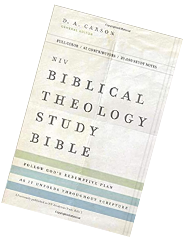
Biblical Theology allows you to ponder the individual stories and themes of Scripture while observing how they all fit together in God’s grand biblical narrative.
With three articles introducing Biblical theology and 25 articles unpacking key themes of Scripture, the NIV Biblical Theology Study Bible equips you to follow the progressive unfolding of God’s story. Helpful introductions to books and sections of the Bible combined with 20,000 verse-by-verse study notes will guide you to a clearer understanding of every portion of Scripture.
 COPYRIGHT: This publication is published by C.S. Lewis Institute; 8001 Braddock Road, Suite 301; Springfield, VA 22151. Portions of the publication may be reproduced for noncommercial, local church or ministry use without prior permission. Electronic copies of the PDF files may be duplicated and transmitted via e-mail for personal and church use. Articles may not be modified without prior written permission of the Institute. For questions, contact the Institute: 703.914.5602 or email us.
COPYRIGHT: This publication is published by C.S. Lewis Institute; 8001 Braddock Road, Suite 301; Springfield, VA 22151. Portions of the publication may be reproduced for noncommercial, local church or ministry use without prior permission. Electronic copies of the PDF files may be duplicated and transmitted via e-mail for personal and church use. Articles may not be modified without prior written permission of the Institute. For questions, contact the Institute: 703.914.5602 or email us.
-
Recent Podcasts
Ralph Waldo Emerson’s Philosophy and Influence
by David George Moore on July 26, 2024Ralph Waldo Emerson was a gifted nineteenth century...Read More
-
The Side B Stories – Nate Sala’s Story
by Jana Harmon, Nate Sala on July 19, 2024
-
Terrorism Through the Eyes of Faith
by Dennis Hollinger on July 12, 2024
-
Recent Publications
Hasn’t Science Proven That Belief in God Is an Outdated Superstition?
by Sharon Dirckx on July 1, 2024Many assume that scientific practice and belief in...Read More
-
Has the Bible Been Corrupted as Some Muslims Claim?
by Andy Bannister on June 1, 2024
-
Seeing Jesus Through the Eyes of Women
by Rebecca McLaughlin on May 15, 2024
0
All Booked
0.00
All Booked
0.00
All Booked
22194
C.S. Lewis’s The Abolition of Man Live Online Small Group 8:00 PM ET
https://www.cslewisinstitute.org/?event=c-s-lewiss-the-abolition-of-man-study-course&event_date=2024-10-02®=1
https://www.paypal.com/cgi-bin/webscr
2024-10-02

Next coming event
Days
Hours
Minutes
Seconds
C.S. Lewis’s The Abolition of Man Live Online Small Group 8:00 PM ET
On October 2, 2024 at 8:00 pmCategories
Speakers

William L. Kynes
Pastor, Senior Fellow for Pastoral Theology, CSLI
Team Members

William L. Kynes
Pastor, Senior Fellow for Pastoral Theology, CSLIPastor William L. "Bill" Kynes is the Senior Fellow for Pastoral Theology at the C.S. Lewis Institute, and retired Senior Pastor of Cornerstone, an Evangelical Free Church, in Annandale, VA, where he served from 1986 - 2022. He was an undergraduate at the University of Florida with a major in philosophy. There he also played quarterback and was later inducted into the university’s Athletic Hall of Fame. He attended Oxford University as a Rhodes Scholar, receiving an MA in theology. He received an MDiv from Trinity Evangelical Divinity School, before returning to England for a PhD in New Testament from Cambridge University. From 1997-1999, he served as an adjunct professor in New Testament for the Trinity Evangelical Divinity School Washington, DC, Extension Program.


